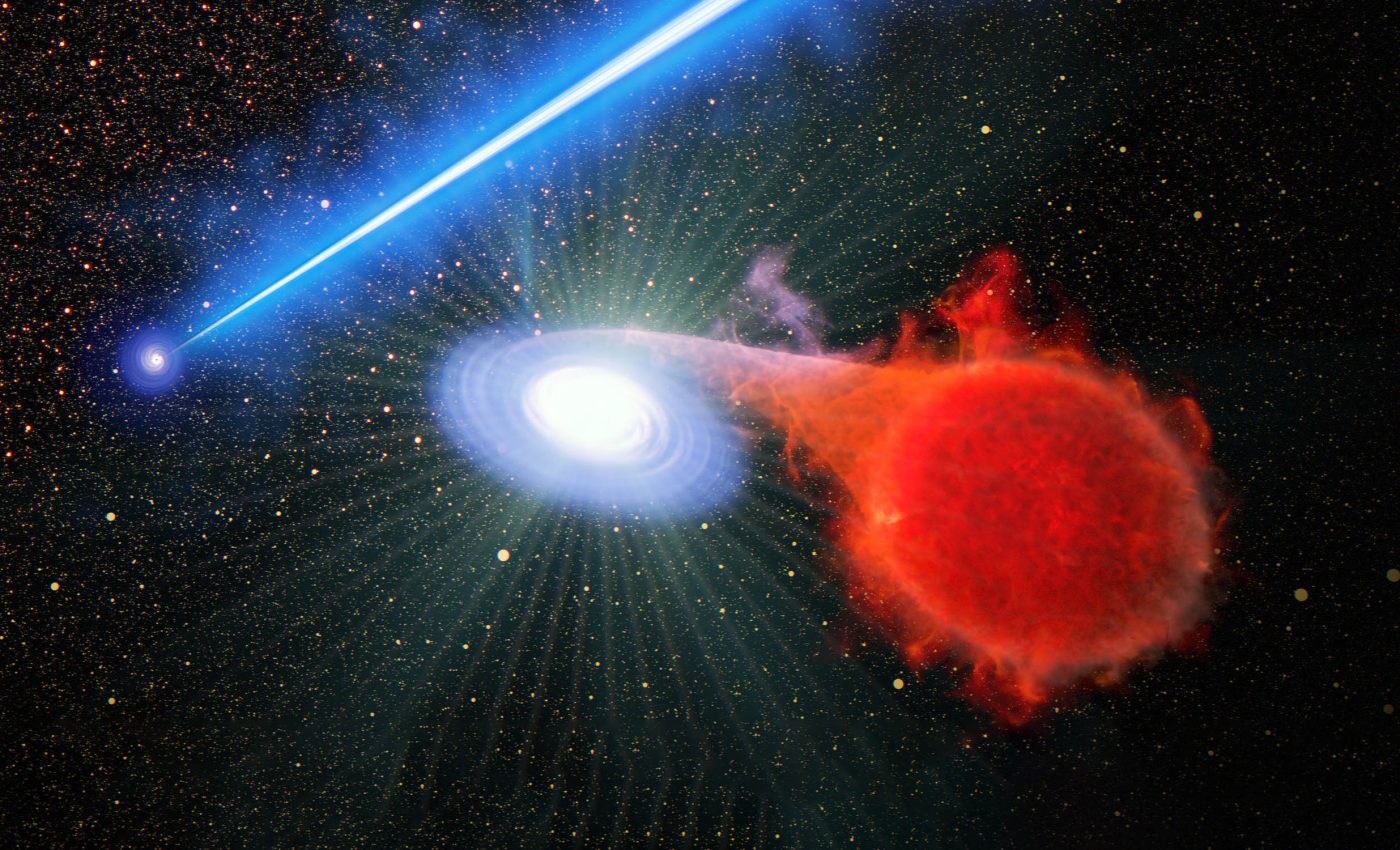
Black hole jets cause stars to erupt as they pass through galaxies
Have you ever wondered about what happens in the universe’s more lively neighborhoods? A recent discovery showcases how a jet beam from a black hole may be causing astral fireworks.
What if, in the heart of a gigantic galaxy, a supermassive black hole’s blowtorch-like jet was the catalyst for stars to erupt along its trajectory?
Well, that’s what astronomers using NASA’s Hubble Space Telescope have recently discovered.
These erupting stars, known as novae, aren’t caught right inside the jet. Instead, they seem to reside in a dangerous vicinity of the jet.
“We don’t know what’s going on, but it’s just a very exciting finding. This means there’s something missing from our understanding of how black hole jets interact with their surroundings,” explained Alec Lessing of Stanford University, lead author of the study.
How a nova erupts near black hole jet
To better understand this complex process, think of it as a double-star system, where a normal star, now aged and swollen, spills hydrogen onto a companion star — a white dwarf that has burned out.
Now, when this dwarf fills up with a mile-deep surface layer of this hydrogen, it detonates in a colossal nuclear explosion.
Interestingly, the dwarf remains unharmed, and the cycle just starts all over again.
Galactic inferno in action
Hubble’s study revealed twice as many novae erupting near the black hole’s jet than elsewhere in the galaxy.
At the center of this phenomenon is a 6.5-billion-solar-mass black hole, surrounded by swirling matter.
As the black hole engulfs infalling material, it launches a 3,000-light-year-long jet of plasma at nearly the speed of light.
The jet’s powerful beam could fry anything directly in its path, but even the nearby regions are hazardous, as shown by the increased nova activity.
Why are novae birthed near the jet?
The discovery suggests that either there are more double-star systems capable of forming novae near the jet or that these systems erupt more frequently.
“Maybe the jet somehow snowplows hydrogen fuel onto the white dwarfs, causing them to erupt more frequently. But it’s not clear that it’s a physical pushing,” Lessing pondered.
It could be the effect of the pressure of the light emanating from the jet. When you deliver hydrogen faster, you get eruptions faster. Something might be doubling the mass transfer rate onto the white dwarfs near the jet.
“We’re not the first people who’ve said that it looks like there’s more activity going on around the M87 jet,” added Michael Shara, co-investigator from the American Museum of Natural History in New York City.
“But Hubble has shown this enhanced activity with far more examples and statistical significance than we ever had before.”
Stars and black hole jets align for Hubble
In fact, the Hubble Space Telescope has managed to shed more light on this cosmic phenomena with far more examples and statistical significance than previously possible.
A vital part of this exciting discovery was revisiting a region every five days to count the erupting novae, which culminated in the deepest images of the galaxy M87 ever taken.
The Hubble discovered 94 novae in just one-third of M87 that its camera can encompass.
“Once you plotted all known novae on top of M87, you didn’t need statistics to convince yourself that there is an excess of novae along the jet,” the scientists explained.
“This discovery was made simply by looking at the images. Our statistical analyses of the data confirmed what we clearly saw.”
Lastly, let’s acknowledge that these novae are no rare event. In galaxy M87 alone, one nova erupts every single day.
With around 100 billion galaxies throughout the visible universe, there’s a dazzling light show with around 1 million novae erupting every second somewhere out there.
Black hole jets as cosmic catalysts
Beyond their immense gravitational pull, black holes exert influence through their powerful jets of plasma, which can stretch for thousands of light-years.
In the case of M87’s 6.5-billion-solar-mass supermassive black hole, the jet appears to play an unexpected role in stellar behavior.
Rather than merely ejecting matter at nearly the speed of light, this jet seems to be increasing the frequency of nova eruptions in nearby double-star systems.
The exact mechanism behind this phenomenon is still unclear, but researchers suspect that the energetic outflow from the black hole could be altering the environment in a way that accelerates mass transfer between stars in these systems.
This newfound connection between black hole jets and stellar eruptions adds another layer of complexity to our understanding of how black holes interact with their surroundings.
—–
Like what you read? Subscribe to our newsletter for engaging articles, exclusive content, and the latest updates.
Check us out on EarthSnap, a free app brought to you by Eric Ralls and Earth.com.
—–













